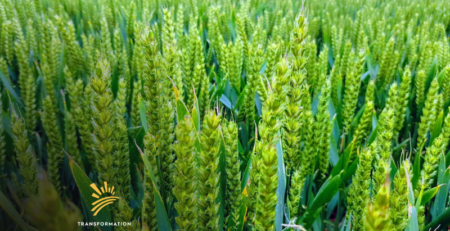Regenerative Agriculture: Key Terms Explained
Regenerative agriculture is currently being touted as the choice solution for climate change mitigation efforts. But what is regenerative agriculture, and can it solve some of our most formidable challenges?
Regenerative Agriculture
According to Regeneration International, regenerative agriculture is a set of farming practices that restore soil organic matter and rebuild soil biodiversity to sequester carbon, improve the water cycle, and produce nutrient-dense food.
Soil Health
Soil health is an essential part of the regenerative agriculture conversation. Unfortunately, soil health has been degraded due to the Green Revolution, a period of technological advancement in the late 1960s, which commercialized high-yielding crop varieties and chemical fertilizers. Although the industrialization of agriculture increased crop yields in the short term, the wide-spread use of Green Revolution technologies in agriculture has accelerated climate change due to land degradation, deforestation, and natural resource depletion.
Regenerative agriculture practices seek to fix, or “regenerate,” currently degraded agricultural land through farming practices proven to increase carbon-rich soil organic matter through a process called carbon sequestration.
Carbon Sequestration
Carbon sequestration is the natural conversion of atmospheric carbon dioxide (CO₂) into carbon stored in the soil. Atmospheric CO₂, one of the primary greenhouse gases, is a well-known accelerator of climate change. CO₂ has increased by about 43% since the First Industrial Revolution in the 18th century, and these human activities, and the subsequent Green Revolution, have put the carbon cycle out of balance.
The Carbon Cycle
The carbon cycle is the sequence of carbon movement and recycling throughout the biosphere. Through this process, carbon dioxide can be drawn down from the atmosphere, through photosynthesis, into healthy soils as pure carbon. Regenerative agriculture practices support soil health and thus carbon sequestration. If soil nutrients are degraded by poor nutrient management and large-scale operations, the ecosystem’s capacity to support plant life, and therefore carbon drawdown, is severely limited.
Regenerative Agriculture Practices
Regenerative agriculture harnesses the power of carbon sequestration to restore the imbalanced carbon cycle. This imbalance results from excess atmospheric CO₂, caused by the burning of fossil fuels, deforestation, and land degradation. To improve soil health and to drawdown atmospheric CO₂, regenerative agriculture implements the following practices:
Organic fertilizers
Synthetic fertilizers deplete the soil of essential nutrients and destroy bacteria and fungi that are essential to plant health. On the other hand, organic fertilizers are the products of natural decomposition and build soil health. Organic fertilizers contain animal waste and byproducts, such as bone meal, feather meal, fish, and kelp.
No Pesticide Use
The term pesticide encompasses a variety of compounds, including insecticides, fungicides, herbicides, and more. The goal of pesticides is to be deadly to targeted pests but neutral to non-target species. Unfortunately, pesticides are not fail-safe, and overwhelming evidence points to human health impacts and unwanted environmental side-effects.
Compost Application
Composting is the natural process of recycling organic matter, such as leaves and food scraps, into an organic fertilizer that increases soil health. Composting accelerates decomposition by providing an ideal environment for bacteria, fungi, and other organisms to break down the organic matter. Compost can be a key tool to improve the health, resiliency, and productivity of agricultural systems.
Crop Rotation
Crop rotation is a method of planting diverse crops interchangeably on farmland to increase soil nutrients, reduce pest and weed pressure, and bolster soil health. A modest rotation might involve a couple of crops, often legumes that fix nitrogen, and intricate rotations might incorporate more than a dozen.
Cover Cropping
A cover crop is a plant used to cover the soil between rotations and is not intended for harvest. These crops improve soil health, enhance water availability, increase crop yields, attract pollinators, and improve crop diversity on farms.
Conservation / No Tillage
Farmers engaging in no-till agriculture do not plow the soil and leave cover crop residue on the surface to protect the soil from erosion and moisture loss. Because the soil is not constantly turned over and disrupted, no-till farming increases water retention, carbon-rich soil organic matter, and nutrient cycling.
Conclusions
Project Drawdown found that farms using these land management practices can increase soil carbon content from a baseline of 1-2% to up to 5-8%, which amounts to 25-60 tons of carbon sequestered per acre over ten years. This increase in sequestered carbon means that markedly less CO₂ is contributing to the greenhouse effect.
Besides the ability of regenerative agriculture to directly sequester carbon, these practices also have indirect positive impacts. Improving food production on existing farmland through regenerative practices reduces the demand for new agricultural land and safeguards against deforestation, which composes the majority of net CO₂ emissions released from the food system. While many solutions are necessary to address the climate crisis, investors have an exciting opportunity to address both the causes and create solutions through regenerative agriculture.




Comment (1)
You’ve shared some incredibly useful information. This is frequently a terrific way for us to broaden our knowledge while remaining useful. Thank you for bringing this article to our attention. regenerative agriculture